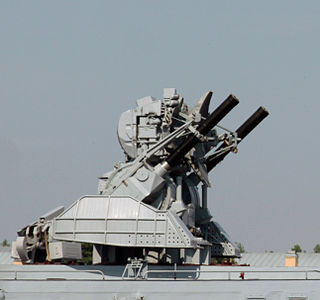 W
WA close-in weapon system is a point-defense weapon system for detecting and destroying short-range incoming missiles and enemy aircraft which have penetrated the outer defenses, typically mounted shipboard in a naval capacity. Nearly all classes of larger modern warships are equipped with some kind of CIWS device.
 W
WThe 2K22 Tunguska is a Russian tracked self-propelled anti-aircraft weapon armed with a surface-to-air gun and missile system. It is designed to provide day and night protection for infantry and tank regiments against low-flying aircraft, helicopters, and cruise missiles in all weather conditions. The NATO reporting name for the missile used by the weapon system is SA-19 "Grison".
 W
WThe 30mm DS30M Mark 2 is a ship-protection system made by MSI-Defence Systems consisting of a 30mm Mark 44 Bushmaster II cannon on an automated mount. It was designed to defend Royal Navy frigates from fast inshore attack craft armed with short-range missiles, rocket-propelled grenades, machine guns or explosives.
 W
WThe AK-230 is a Soviet fully automatic naval twin 30 mm gun. Its primary function is anti-aircraft. It is mounted in an enclosed automatic turret and directed by radar. AK-230 is widely used, mounted on big warships as well as small craft. About 1450 guns were produced in the USSR, and about 300 were produced in China as the Type 69. It was succeeded by the more powerful AK-630 from the mid-to-late 1970s.
 W
WThe AK-630 is a Soviet and Russian fully automatic naval close-in weapon system based on a six-barreled 30 mm rotary cannon. In "630", "6" means 6 barrels and "30" means 30 mm. It is mounted in an enclosed automatic turret and directed by MR-123 radar and television detection and tracking. The system's primary purpose is defense against anti-ship missiles and other precision guided weapons. However it can also be employed against fixed or rotary wing aircraft, ships and other small craft, coastal targets, and floating mines. Once operational, this weapon system was rapidly adopted, with up to 8 units installed in every new Soviet warship, and hundreds produced in total.
 W
WAn autocannon, automatic cannon or machine cannon is a fully automatic gun that is capable of rapid-firing large-caliber armour-piercing, explosive or incendiary shells, as opposed to the smaller-caliber kinetic projectiles (bullets) fired by a machine gun. Autocannons have a longer effective range and greater terminal performance than machine guns, due to the use of larger/heavier munitions, but are usually smaller than tank guns, howitzers, field guns or other artillery. When used on its own, the word "autocannon" typically indicates a non-rotary weapon with a single barrel. When multiple rotating barrels are involved, such a weapon is referred to as a "rotary autocannon" or simply "rotary cannon".
 W
WBarak is an Israeli surface-to-air missile (SAM) designed to be used as a ship-borne point-defense missile system against aircraft, anti-ship missiles, and UAVs.
 W
WCounter rocket, artillery, and mortar, abbreviated C-RAM or counter-RAM, is a set of systems used to detect and/or destroy incoming rockets, artillery, and mortar rounds in the air before they hit their ground targets, or simply provide early warning.
 W
WDARDO is a close-in weapon system (CIWS) built by the Italian companies Breda and Oto Melara. It is composed of two Breda-built Bofors 40 mm firing high explosive (HE) shells, a fire-control radar (RTN-10X) and a fire-control system. It is the last of a long series of Italian anti-aircraft weapons derived from the Swedish Bofors 40 mm autocannons.
 W
WThe Denel 35mm Dual Purpose Gun (35DPG) is a close-in weapon system (CIWS) for warships built in South Africa by Denel Land Systems. It is currently in service on the Valour-class frigates of the South African Navy.
 W
WGoalkeeper is a Dutch close-in weapon system (CIWS) introduced in 1979. It is an autonomous and completely automatic weapon system for short-range defence of ships against highly manoeuvrable missiles, aircraft and fast-manoeuvering surface vessels. Once activated the system automatically undertakes the entire air defence process from surveillance and detection to destruction, including the selection of the next priority target.
 W
WThe HQ-10 is a short range surface-to-air missile designed by China Aerospace Science and Technology Corporation (CASC), currently in service as a point defense missile system aboard PLA Navy warships.
 W
WThe Kortik close-in weapon system (CIWS) is a modern naval air defence gun-missile system deployed by the Russian Navy. Its export version is known as Kashtan, with the NATO designation CADS-N-1 Kashtan.
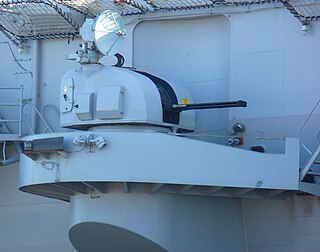 W
WThe Meroka CIWS is a Spanish Navy 12 barrelled 20 mm CIWS, using twelve Oerlikon 20 mm/120 guns mounted in 2 rows of 6 guns each. The system's primary purpose is defence against anti-ship missiles, and other precision guided weapons. However it can also be employed against aircraft, ships and other small craft, coastal targets, and floating mines. The weapon is mounted primarily on Spanish naval vessels, from frigate size upwards.
 W
WThe Rheinmetall Oerlikon Millennium Gun or Rheinmetall GDM-008 is a close-in weapon system designed by Rheinmetall Air Defence AG for mounting on ships. It is based on the 35/1000 revolver gun land-based air defense system and uses AHEAD ammunition.
 W
WPantsir-M is a Russian jamming-resistant naval close-in weapon system (CIWS) which entered service in 2018. Pantsir-M is equipped with friend or foe identification system and armed with naval version of the Pantsir's 57E6 missiles and Hermes-K missiles. Its secondary armament are two six-barreled 30×165mm GSh-6-30K/AO-18KD rotary cannons. Same as on Kashtan-M. Pantsir-M is fully automated and can engage up to four targets simultaneously at a range of up to 20 km and can operate as a battery of up to four modules. Pantsir-M can intercept sea skimming missiles flying as low as two meters above the surface. If a target isn't sufficiently destroyed by Pantsir's missile attack it can automatically direct its cannons against it. Pantsir-M's phased array radar, electro-optical/infrared targeting and identification system are based on that of Pantsir's 1RS2-1.
 W
WThe Phalanx CIWS is a close-in weapon system for defense against incoming threats such as small boats, surface torpedoes, anti-ship missiles and helicopters. It was designed and manufactured by the General Dynamics Corporation, Pomona Division, later a part of Raytheon. Consisting of a radar-guided 20 mm (0.8 in) Vulcan cannon mounted on a swiveling base, the Phalanx has been used by the United States Navy and the naval forces of 15 other countries. The US Navy deploys it on every class of surface combat ship, except the Zumwalt-class destroyer and San Antonio-class amphibious transport dock. Other users include the British Royal Navy, the Royal Australian Navy, the Royal Canadian Navy and the US Coast Guard .
 W
WThe RIM-116 Rolling Airframe Missile (RAM) is a small, lightweight, infrared homing surface-to-air missile in use by the German, Japanese, Greek, Turkish, South Korean, Saudi Arabian, Egyptian, Mexican and U.S. Navies. It was intended originally and used primarily as a point-defense weapon against anti-ship cruise missiles. As its name indicates, RAM rolls as it flies. The missile must roll during flight because the RF tracking system uses a two-antenna interferometer that can measure phase interference of the electromagnetic wave in one plane only. The rolling interferometer permits the antennas to look at all planes of incoming energy. In addition, because the missile rolls, only one pair of steering canards is required. As of 2005, it is the only U.S. Navy missile to operate in this manner.
 W
WThe Sea Oryx is a lightweight, infrared homing short-range air defense system developed for the Republic of China (Taiwan) Navy. Based on the TC-1L surface-to-air missile, it is designed to defend against anti-ship missiles, helicopters, and low flying fixed-wing jet airplanes.
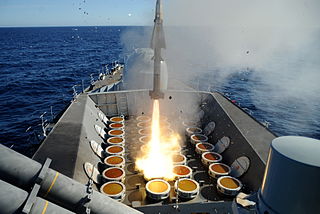 W
WSea Wolf is a naval surface-to-air missile system designed and built by BAC, later to become British Aerospace (BAe) Dynamics, and now MBDA. It is an automated point-defence weapon system designed as a short-range defence against both sea-skimming and high angle anti-ship missiles and aircraft. The Royal Navy has fielded two versions, the GWS-25 Conventionally Launched Sea Wolf (CLSW) and the GWS-26 Vertically Launched Sea Wolf (VLSW) forms. In Royal Navy service Sea Wolf is being replaced by Sea Ceptor.
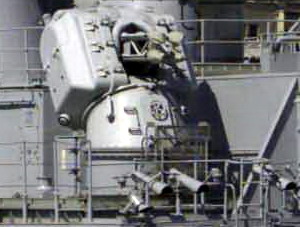 W
WSea Zenith is a four-barrelled 25 mm CIWS used by the Turkish Navy on their MEKO 200 frigates, like the Barbaros and Yavuz classes. It was developed in the 1980s by Oerlikon Contraves around their Oerlikon KBB gun and manufactured in Switzerland. This automatic gun uses a 25x184mm cartridge at a rate of 800 rounds a minute. Using four independent guns instead of one multi-barrelled rotary cannon improves reliability. The system is mounted in an enclosed automatic turret and directed by the Seaguard radar developed by Contraves. The turret is tilted back to allow a higher elevation to intercept diving missiles. The system's primary purpose is defence against anti-ship missiles, and other precision guided weapons. However it can also be employed against fixed/rotary wing aircraft, ships and other small craft, coastal targets, and floating mines.
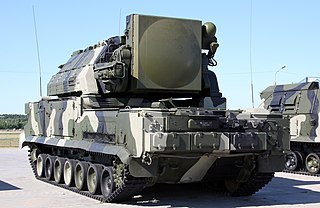 W
WThe Tor missile system is an all-weather low to medium altitude, short-range surface-to-air missile system designed for destroying airplanes, helicopters, cruise missiles, precision guided munitions, unmanned aerial vehicles and short-range ballistic threats (anti-munitions). Originally developed by the Soviet Union under the GRAU designation 9K330 Tor, the system is commonly known by its NATO reporting name, SA-15 "Gauntlet". A navalized variant was developed under the name 3K95 "Kinzhal", also known as the SA-N-9 "Gauntlet". Tor was also the first air defence system in the world designed from the start to shoot down precision guided weapons like the AGM-86 ALCM day and night, in bad weather and jamming situations. Tor can detect targets while on the move. The vehicle must stop intermittently when firing, although trials are being conducted to eliminate this restriction.
 W
WThe Type 730 is a Chinese seven-barrelled 30 mm Gatling gun CIWS. It has a PLA Navy designation H/PJ12. It is mounted in an enclosed automatic turret and directed by radar, and electro-optical tracking systems. The maximum rate of fire is 5800 rd/m, and the effective range is up to 3 km.